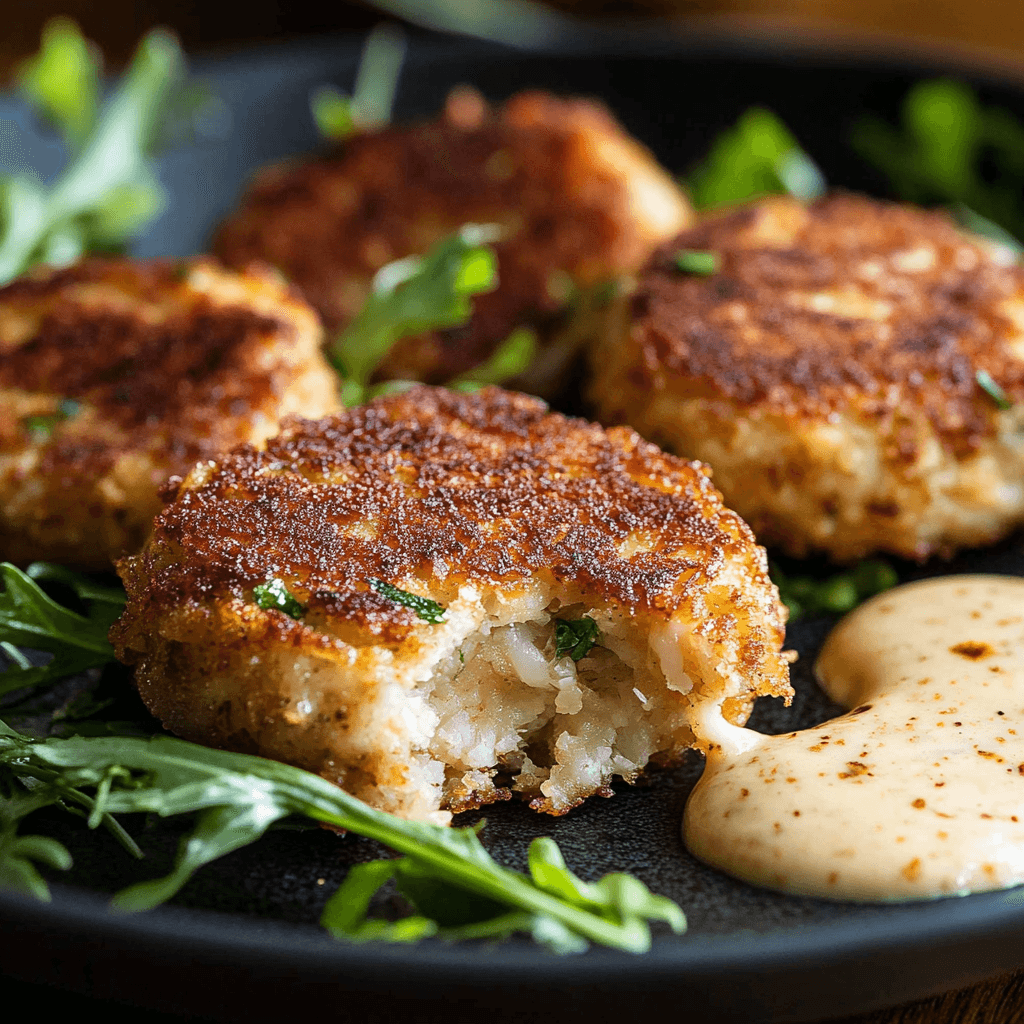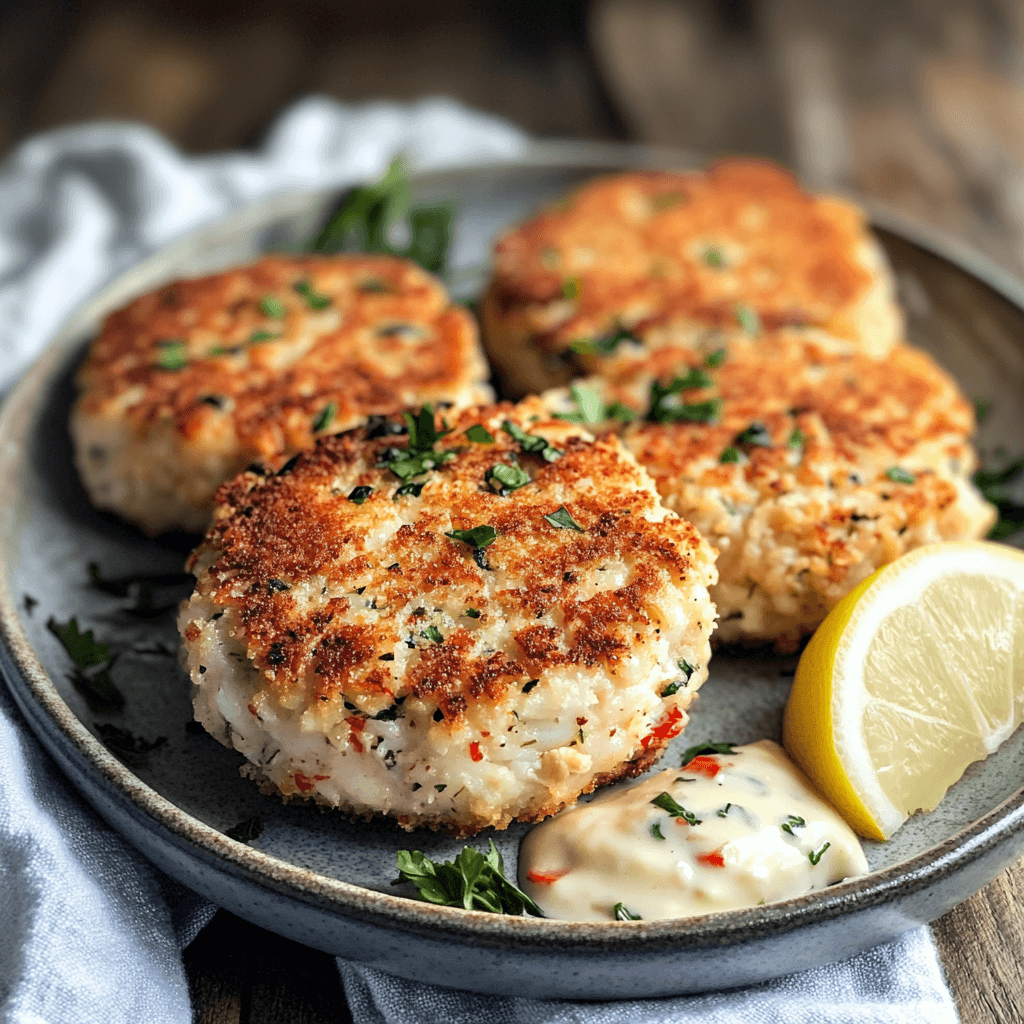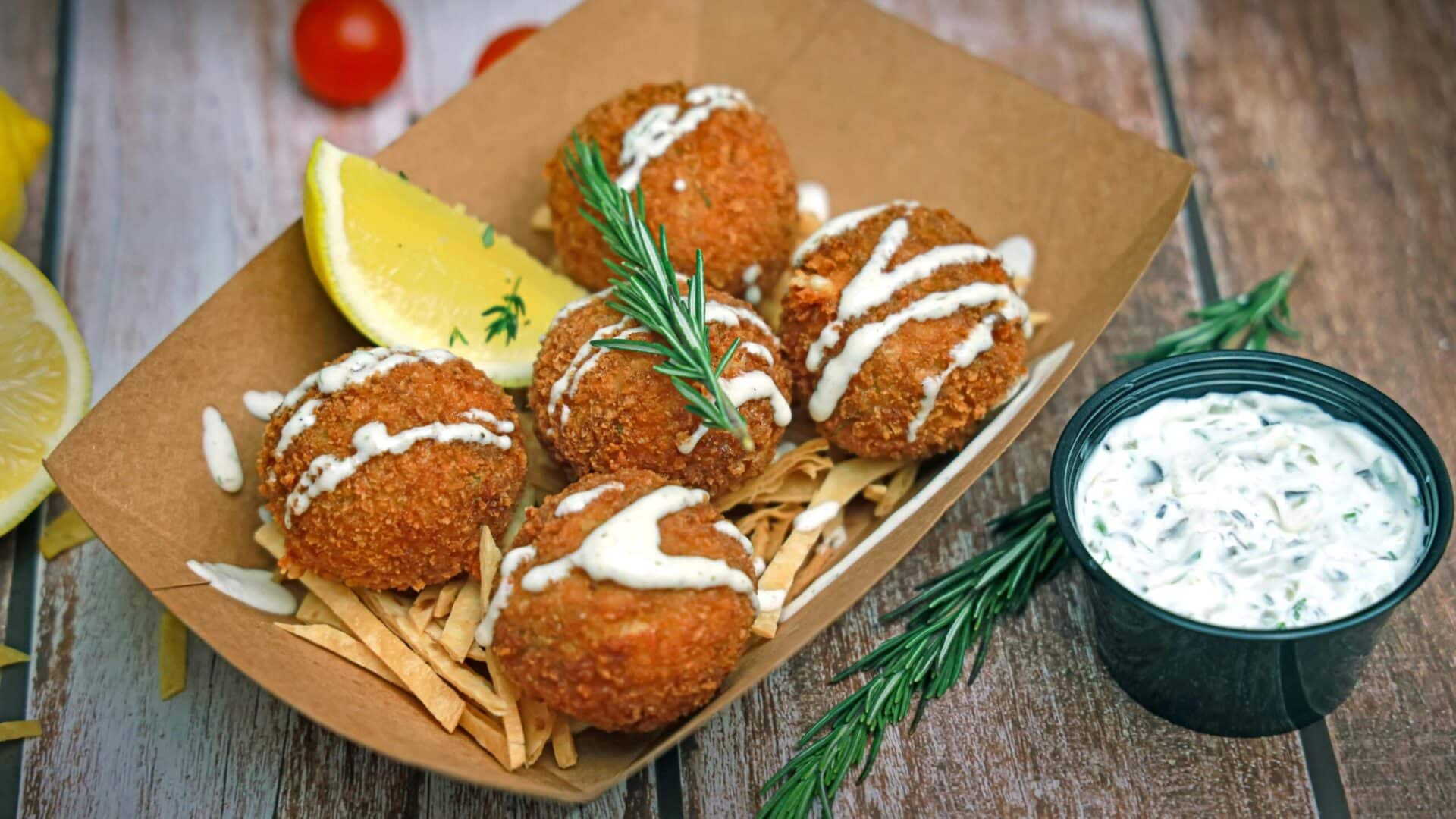Crab cakes are a beloved dish, celebrated for their rich flavors and delicate texture. But for those following a gluten-free diet, enjoying this classic seafood treat often requires some creative adaptations. Enter gluten-free crab cakes—a delicious alternative that maintains all the flavor and satisfaction of traditional recipes while eliminating gluten-containing ingredients.
Whether you’re avoiding gluten due to dietary restrictions, health concerns, or simply a preference for lighter meals, these crab cakes offer a perfect solution. Made with high-quality lump crab meat, gluten-free breadcrumbs, and a blend of flavorful seasonings, this dish proves that going gluten-free doesn’t mean compromising on taste or texture.
In this article, we’ll explore why gluten-free crab cakes are a fantastic addition to your culinary repertoire, provide step-by-step instructions for making them at home, and share tips for pairing them with the perfect sides. Get ready to enjoy this seafood favorite in a way that’s both healthy and satisfying!
2. Why Choose Gluten-Free Crab Cakes?
Crab cakes are a classic seafood dish, but their traditional recipes often include breadcrumbs made from wheat, which isn’t suitable for everyone. Gluten-free crab cakes offer an alternative that’s just as flavorful, catering to those with gluten sensitivities or anyone seeking healthier options.
2.1. Benefits of a Gluten-Free Diet
- Digestive Health: Many people experience improved digestion and reduced bloating when avoiding gluten.
- Accommodating Sensitivities: Gluten-free crab cakes are ideal for individuals with celiac disease or gluten intolerance.
- Healthier Ingredients: Substituting traditional breadcrumbs with gluten-free options like almond flour or crushed rice crackers often results in lower-carb, nutrient-rich meals.
2.2. Nutritional Advantages of Crab Meat
Crab meat is a star ingredient that makes this dish not only delicious but also packed with nutritional benefits:
- High Protein Content: Crab meat is a lean protein source, perfect for maintaining energy and building muscle.
- Rich in Vitamins and Minerals: Loaded with vitamin B12, selenium, and zinc, crab meat supports overall health.
- Low in Calories and Fat: A light yet satisfying option for those seeking a balanced meal.
2.3. Maintaining Flavor Without Gluten
One common concern is that gluten-free versions of dishes might lack the depth of flavor found in traditional recipes. However, gluten-free crab cakes defy this misconception:
- Flavorful Substitutes: Gluten-free breadcrumbs or almond flour blend seamlessly with the other ingredients, enhancing rather than masking the crab’s natural sweetness.
- Seasoning is Key: Classic seasonings like Old Bay, fresh herbs, and citrus elevate the dish, ensuring it remains a flavor-packed favorite.
With all these benefits, it’s easy to see why gluten-free crab cakes are becoming a popular choice for health-conscious seafood lovers. They combine the best of both worlds: taste and nutrition, without compromise.

3. Ingredients for Gluten-Free Crab Cakes
The secret to making mouthwatering gluten-free crab cakes lies in using fresh, high-quality ingredients that bring out the best in every bite. Here’s a breakdown of the essential components and a few creative substitutions to suit your dietary needs.
3.1. Core Ingredients
- Lump Crab Meat: The star of the dish. Opt for fresh or pasteurized crab meat for the best flavor and texture. Jumbo lump crab meat works well for a luxurious feel.
- Gluten-Free Breadcrumbs: Replace traditional breadcrumbs with alternatives like:
- Almond flour
- Crushed rice crackers
- Gluten-free panko breadcrumbs
- Mayonnaise: Acts as a binder and adds moisture.
- Eggs: Essential for holding the crab cakes together.
- Dijon Mustard: Adds a subtle tang that enhances the overall flavor.
3.2. Flavor Enhancers
- Old Bay Seasoning: A Maryland staple that delivers a perfect blend of spices.
- Lemon Juice: Freshly squeezed for a bright, citrusy note.
- Garlic and Onion Powder: For added depth and a savory kick.
- Fresh Parsley: Chopped finely to balance the richness with a hint of herbaceousness.
3.3. Ingredient Substitutions
- For those with nut allergies: Use crushed gluten-free crackers instead of almond flour.
- Looking for low-carb? Coconut flour is a keto-friendly alternative, though it absorbs more moisture, so adjust liquids accordingly.
- Dairy-free option: Ensure the mayonnaise you use is dairy-free to accommodate specific dietary needs.

Pro Tip:
Fresh ingredients make all the difference. Avoid canned crab meat if possible, as it may lack the sweetness and texture of fresh or pasteurized options.
4. How to Make Gluten-Free Crab Cakes
Creating gluten-free crab cakes at home is a straightforward process that delivers delicious results every time. Here’s a detailed guide to help you achieve the perfect balance of flavor, texture, and presentation.
4.1. Step-by-Step Instructions
- Prepare the Crab Cake Mixture:
- In a large bowl, gently mix the lump crab meat, gluten-free breadcrumbs, mayonnaise, eggs, Dijon mustard, Old Bay seasoning, lemon juice, and fresh parsley. Be careful to combine the ingredients without breaking apart the crab meat’s natural lumps.
- Shape the Crab Cakes:
- Using your hands or a scoop, form the mixture into evenly sized patties, approximately 3 inches wide and 1 inch thick. Place the formed crab cakes onto a tray lined with parchment paper.
- Chill the Patties:
- Refrigerate the patties for 20–30 minutes. This step helps them firm up and maintain their shape during cooking.
- Cook the Crab Cakes:
- Choose your preferred method for cooking:
- Pan-Frying: Heat a shallow layer of oil in a skillet over medium heat. Cook the crab cakes for about 3–4 minutes on each side until they are golden brown with a crispy exterior.
- Baking: Preheat the oven to 375°F (190°C). Arrange the crab cakes on a lightly greased baking sheet and bake for 15–20 minutes, flipping halfway through to ensure even cooking.
- Air Frying: Preheat the air fryer to 375°F (190°C). Place the crab cakes in the basket and cook for 10–12 minutes, flipping once, for a healthier yet crisp result.
- Choose your preferred method for cooking:
- Serve and Enjoy:
- Remove the crab cakes from the heat and let them rest for 2 minutes. Garnish with additional fresh parsley and serve with lemon wedges and your favorite dipping sauce, such as tartar sauce or a zesty lemon aioli.
4.2. Pro Tips for Success
- Prevent Crumbling: Ensure the mixture is firm yet moist. If it feels too wet, mix in additional gluten-free breadcrumbs until it holds together.
- Maximize Crispiness: When pan-frying, use a mix of oil and butter for a golden crust with enhanced flavor.
- Customize the Flavor: For an extra kick, add a pinch of cayenne pepper or smoked paprika to the mixture.
By following these steps, you’ll create gluten-free crab cakes that are crisp on the outside, tender on the inside, and packed with flavor—perfect for appetizers, brunch, or a light dinner.
5. Variations and Pairings
One of the best things about gluten-free crab cakes is their versatility. You can tweak the recipe to suit different preferences or occasions, and pairing them with the right sides elevates the entire meal. Here are some creative variations and pairing suggestions to inspire you.
5.1. Recipe Variations
- Keto-Friendly Crab Cakes:
- Swap gluten-free breadcrumbs with almond flour or crushed pork rinds for a low-carb option.
- Serve with a dollop of garlic aioli for added richness.
- Spicy Cajun Crab Cakes:
- Add a teaspoon of Cajun seasoning and a pinch of cayenne pepper to the mixture.
- Pair with a tangy remoulade sauce for a Southern-inspired twist.
- Herbed Lemon Crab Cakes:
- Increase the amount of fresh parsley and add finely chopped dill and chives.
- Enhance the flavor with a drizzle of lemon butter sauce.
5.2. Perfect Side Dishes
Pairing your crab cakes with complementary sides transforms them into a complete meal:
- Vegetables:
- Roasted asparagus or steamed broccoli add a fresh, healthy touch.
- A mixed green salad with a light vinaigrette balances the richness of the crab cakes.
- Carbs:
- A creamy mashed potato or wild rice pilaf pairs beautifully with the crab’s delicate flavors.
- Gluten-free dinner rolls make for a satisfying addition to the plate.
- Dips and Sauces:
- Lemon garlic aioli or tartar sauce brings out the best in each bite.
- A spicy Sriracha mayo adds a zesty, bold contrast.
5.3. Serving Suggestions
- For Brunch: Serve smaller, bite-sized crab cakes alongside scrambled eggs and fresh fruit for a luxurious start to the day.
- As an Appetizer: Arrange mini crab cakes on a platter with toothpicks and a variety of dipping sauces for a crowd-pleasing starter.
- For Dinner: Pair full-sized crab cakes with roasted vegetables and a glass of chilled white wine for an elegant yet easy evening meal.

6. Frequently Asked Questions (FAQs)
Here are answers to some of the most common questions about making and enjoying gluten-free crab cakes. These tips will help you perfect your recipe and address any concerns.
6.1. What are the best gluten-free breadcrumbs for crab cakes?
- The most popular options include:
- Gluten-free panko breadcrumbs for a light and crispy texture.
- Almond flour for a nutty, low-carb alternative.
- Crushed rice crackers, which provide a neutral flavor and great binding.
6.2. Can I freeze gluten-free crab cakes?
- Yes! Gluten-free crab cakes freeze well, whether cooked or uncooked:
- Uncooked: Arrange the formed patties on a tray lined with parchment paper and freeze until firm. Once solid, move them into a sealed container or a resealable freezer bag.
- Cooked: Allow the crab cakes to cool completely, then wrap each one individually in plastic wrap and place them in a storage container suitable for freezing.
- To reheat: Bake frozen crab cakes at 375°F (190°C) for 15–20 minutes until fully heated through.
6.3. How do I bind crab cakes without gluten?
- Gluten-free alternatives such as almond flour, crushed gluten-free crackers, or even cooked quinoa work well as binders. Adding eggs and a small amount of mayonnaise also helps hold the mixture together.
6.4. What dipping sauces pair best with gluten-free crab cakes?
- Lemon garlic aioli, tartar sauce, remoulade, or a spicy Sriracha mayo are all excellent options that enhance the flavor of crab cakes.
6.5. How can I prevent crab cakes from falling apart?
- Ensure the mixture is firm and well-combined but not overly wet. Refrigerating the patties for 20–30 minutes before cooking helps them hold their shape during frying, baking, or air frying.
6.6. Are gluten-free crab cakes suitable for other dietary needs?
- Many gluten-free crab cakes can also be adapted for specific diets:
- Keto-friendly: Use almond flour or crushed pork rinds as a binder.
- Dairy-free: Replace mayonnaise with a dairy-free alternative.
6.7. Exploring Versatility in Gluten-Free Crab Cakes
Gluten-free crab cakes are incredibly versatile, making them a great choice for various dietary needs. By customizing the core recipe, you can create versions that cater to specific preferences while maintaining the classic flavors. For a keto-friendly twist, substitute traditional breadcrumbs with almond flour or crushed pork rinds. These low-carb alternatives ensure the crab cakes stay light and crispy.If you’re seeking a dairy-free alternative, you can replace mayonnaise with a plant-based option, making the recipe perfectly suitable for those who are lactose-intolerant.
For those following the paleo diet, grain-free flours like coconut flour or almond flour work perfectly as binders. Avoiding processed condiments ensures the recipe stays clean and wholesome. Pair these crab cakes with roasted vegetables or cauliflower rice for a balanced meal.
Looking for more gluten-free options? Explore Tips for Gluten-Free Cooking to discover new techniques for your favorite dishes. You can also learn about pairing ideas in Perfect Gluten-Free Sides to complement your crab cakes.
With these customizations and complementary dishes, gluten-free crab cakes can be adapted to suit everyone at the table, making them an ideal choice for any occasion.
Last Words
Gluten-free crab cakes offer a delicious way to enjoy a classic seafood dish without compromising on flavor or texture. Whether you’re gluten-sensitive, following a specific diet, or simply looking for a healthier alternative, these crab cakes are a versatile and satisfying option. With fresh, high-quality crab meat, flavorful seasonings like Old Bay, and creative gluten-free binders, you can recreate this iconic dish with ease.
By carefully following the step-by-step guide, thoroughly exploring recipe variations, and thoughtfully pairing them with the right sides and sauces, you’ll effortlessly enjoy crab cakes that are perfectly crisp on the outside, delightfully tender on the inside, and bursting with irresistible flavor. Plus, the tips for freezing and reheating ensure you always have a delicious meal ready to go.
So, why wait? Gather your ingredients, try out the recipe, and discover the joy of making your own gluten-free crab cakes. Share them with family and friends, and don’t forget to experiment with your favorite flavors and pairings. Happy cooking!
For the perfect pairing with your gluten-free crab cakes, consider trying some complementary dishes inspired by Maryland’s rich culinary traditions. You could explore ideas from our post on Maryland Seafood: A Culinary Treasure Trove to incorporate regional flavors. If baked seafood catches your interest, then you should definitely check out Delicious Baked Rockfish Recipes for even more inspiration on how to effortlessly prepare seafood dishes with a gluten-free twist. Hosting a summer gathering? Pair your crab cakes with a refreshing dessert like Kakigori: Japan’s Iconic Shaved Ice Treat to round out your meal. For more insights and inspiration on creating perfect Gluten-Free Crab Cakes, check out this comprehensive guide with easy recipes and practical tips.
